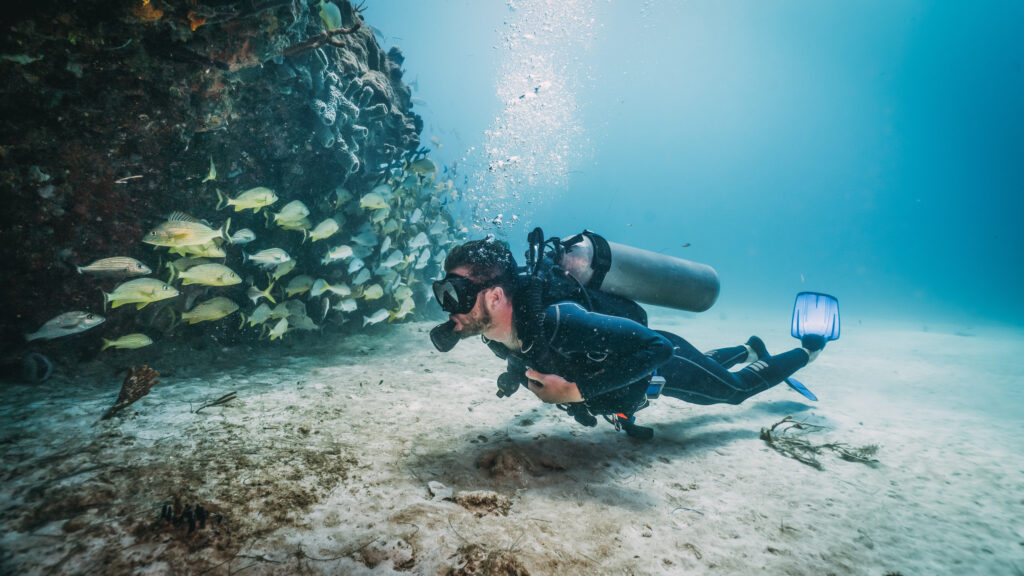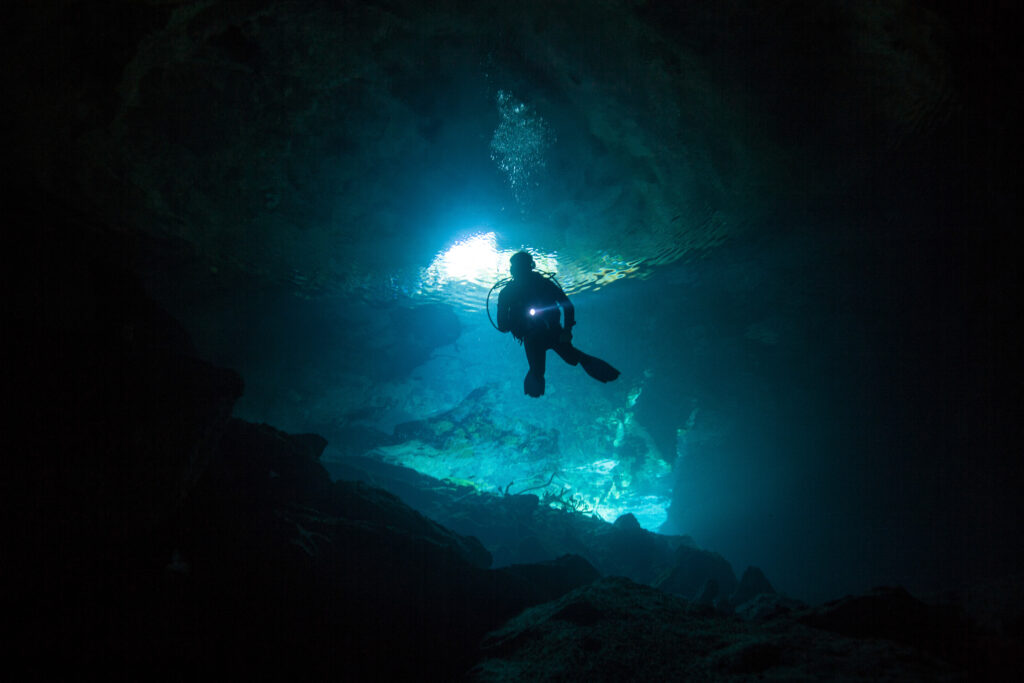What is Open Circuit Scuba?

Open circuit scuba diving is a method of underwater diving in which the diver breathes from a tank of compressed gas and exhales directly into the water. This system is contrasted with closed-circuit systems, where exhaled gas is recycled and re-breathed. Open circuit scuba is the most common and widely used system in both recreational and professional diving. It is valued for its simplicity, reliability, and the extensive training programs available to certify divers. The ease of use and availability of open circuit scuba equipment have made it a cornerstone of underwater exploration.
What is Multilevel Diving?

Multilevel diving is a technique in scuba diving that involves changing depths multiple times throughout a single dive. Unlike traditional dives, where a diver descends to a certain depth and remains there until starting their ascent, multilevel diving takes advantage of varying depths to maximize bottom time and minimize the risk of decompression sickness (DCS). This method is particularly beneficial for exploring underwater environments with significant depth variations, such as coral reefs, wrecks, and underwater walls.
What is a Low Volume Mask?

A low volume mask is a specific type of diving mask designed to minimize the internal air space between the diver’s face and the lens. This reduced volume makes it easier to equalize pressure and clear the mask of water, enhancing comfort and efficiency, especially in activities such as freediving and spearfishing. Low volume masks are distinguished by their close-fitting design and the ability to improve a diver’s overall underwater experience by offering a broader field of vision and less buoyancy.
What is a Gas Embolism?

A gas embolism is a serious medical condition that can occur when gas bubbles enter the bloodstream and obstruct blood vessels. This condition is particularly relevant to scuba divers due to the unique pressures and environments encountered underwater. When a diver ascends too quickly or experiences equipment failure, gas bubbles can form within the blood vessels, leading to potentially life-threatening complications. Understanding gas embolism within the context of scuba diving involves recognizing how these gas bubbles form, their impact on the body, and the measures necessary to prevent and treat this condition.
What is Entry when Scuba Diving?

Entry techniques in scuba diving are critical for ensuring diver safety and environmental preservation. Proper entry methods allow divers to enter the water with minimal risk of injury and help protect marine environments from damage. Understanding and mastering various entry techniques is essential for divers of all skill levels, as it impacts both the initial moments of the dive and the overall diving experience.
Can you get Hypothermia when Scuba Diving?

Can you get Hypothermia when Scuba Diving? Hypothermia is a medical condition characterized by a drop in the body’s core temperature below its normal range, which can occur during activities in cold environments, such as scuba diving. In the context of scuba diving, hypothermia poses significant risks to divers and can lead to serious complications, […]
What is an Inflator Valve?

An inflator valve is a crucial component of scuba diving equipment, particularly in buoyancy compensators (BCDs), allowing divers to adjust their buoyancy underwater. By adding or releasing air into the BCD, divers can achieve neutral buoyancy, making it easier to maintain their position in the water. The inflator valve’s functionality directly influences a diver’s control and safety, making it an essential element for any diving expedition.
What is Overweighting?

Overweighting in scuba diving refers to the practice of using more weight than necessary to achieve neutral buoyancy underwater. Proper weighting is crucial for maintaining control, safety, and efficiency while diving. Overweighting can occur due to various factors, including misconceptions about the amount of weight needed, incorrect gear configuration, and psychological influences. Understanding the implications of overweighting and how to manage it is essential for divers of all levels to ensure a safe and enjoyable underwater experience.
What is a Mask Squeeze?

What is a Mask Squeeze? Mask squeeze, also known as facial barotrauma, is a painful and potentially dangerous condition that may occur during rapid descents in scuba diving. As a diver descends, the ambient pressure in the water increases, leading to a disparity between the pressure inside the mask and the surrounding water pressure. If […]
What is Freediving?

Freediving, also known as breath-hold diving or apnea, is an underwater activity that involves diving without the aid of scuba equipment or artificial breathing apparatus.
